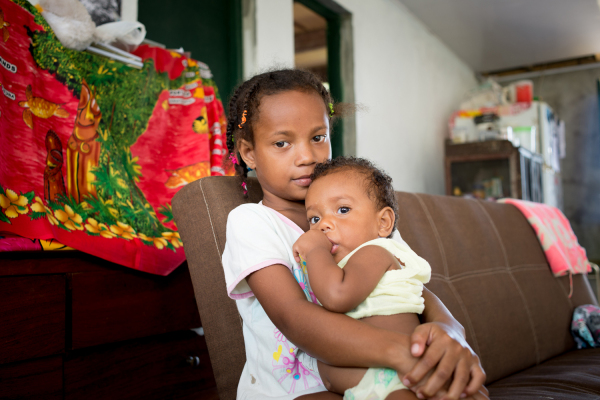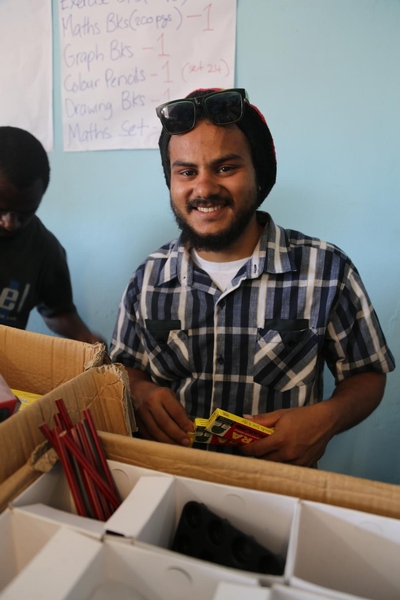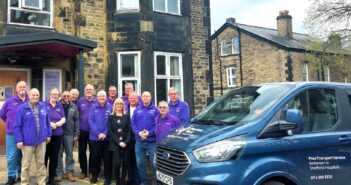When Unicef restored water to their community after Cyclone Pam, Adelaide, 11, and her family, were finally able to shower and clean up their home.

Adelaide, 11, and her younger sister Catalia, 1, are able to access clean water now after Unicef restored their community’s water system.
© Unicef Pacific/2015/Sevenier
Tropical Cyclone Pam is regarded as one of the worst natural disasters in the history of Vanuatu. At least 17 people are known to have lost their lives and approximately 65,000 have been left homeless. The storm’s impacts were also felt, to a lesser extent, in other islands in the South Pacific, most notably the Solomon Islands, Tuvalu, and New Zealand.
The water pump system had been damaged in Adelaide’s community, Teoumaville, Efate. As the power was down, UNICEF provided a generator and fuel to make the system work again, allowing thousands of people access to clean drinking water and water for hygiene.
Since Cyclone Pam hit Vanuatu Adelaide’s family had been walking to the closest river several times a day to fetch water for drinking and household use. Today, they have water running in their house.
“I tried to be brave, but I cried during the whole night when the cyclone came,” Adelaide recalls. “I was so tired, but my mum woke us up. She didn’t want us to sleep in case the house would not resist. The house was flooded, many things broke. Everything was dirty. And afterwards, we didn’t have any water to clean it up. Now we do.”
Around 82,000 children – about two thirds of the children in Vanuatu – are in need of humanitarian assistance.
Adequate water and sanitation services are essential to children and their families in Vanuatu. Poor hygiene in times of emergency can lead to diarrhoea and other disease outbreaks.
UNICEF is supporting the Department of Geology, Mines, and Water Resources of the Vanuatu Government and partners to make sure children such as Adelaide have access to water and sanitation in the devastated country.
The Task of Rebuilding after Tropical Cyclone Pam
People in the area are now focused on the huge task of rebuilding, and there are signs of progress. A week after Cyclone Pam hit the South Pacific archipelago with winds of 270 kilometres an hour, many bridges have been temporarily repaired meaning vehicles are now able to get around the island using the main roads.
Even people affected by the cyclone have been hard at work helping to support their community through this difficult time.
Bobby, 24, has been volunteering with Unicef in Port Vila, Vanuatu. He has been part of a team that has packed 700 school kits containing essential school supplies for children who lost everything in Cyclone Pam. He said, “I live in a household of eight people. Our roof was blown right off our house! It was bad. I’m here today helping out with this because even though we had some damage, others suffered more. I’ve been volunteering a lot actually because I enjoy volunteering and helping others in need. Some people think that the disaster is the end as we know it but I think that sometimes things like this happen for a reason. This is an opportunity to rebuild our lives – start fresh together.”
Sara, 21, who was also involved in helping pack the school kits, said, “When I grow up I want to develop further communication systems in Vanuatu for my people. I wanted to come today to help others who are worse off than many of us who didn’t get that much damage during the cyclone. I think it’s important to help others get back on their feet and to help those who are worse off than I am.”
Click here to find out how you can help people affected by Cyclone Pam.


